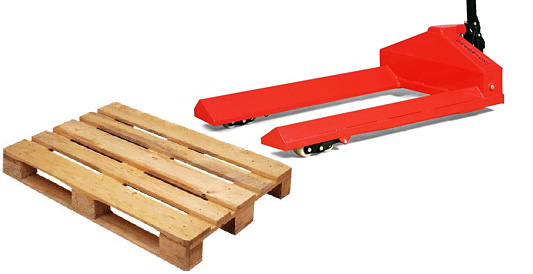A world of pallets

Every now and then while researching subjects for this blog, I discover a new fact or bit of information about packaging products that makes me sit up. According to some figures I’ve just come across, over half a billion new pallets are made every year and about two billion pallets are currently in use across the United States alone. Those are astonishing statistics however you look at them.
Put it another way: the total population of the planet is currently about 7 billion. That means that in the US, there is a pallet for every 3½ people in the world. That must surely mean that across the Earth there are enough pallets for all of us to have at least one each.
It’s no wonder the place is so overcrowded!
A brief history of the pallet
The history of the pallet is hard to gauge, because it depends to a large part on what you think one is. If it’s just a flat something on which you can store cardboard boxes and the like, then it probably dates back centuries. If being able to move one fairly easily is a fundamental part of its make-up, then it becomes much easier, because the first version of a modern pallet truck, able to lift and move a loaded pallet, was invented in 1887.
That at least began the process of making the transportation of large and heavy goods a bit easier. What it didn’t do was make their storage any more convenient. The first truck able to lift pallets several feet appeared soon after the end of World War I, and had developed enough by 1926 to closely resemble the forklift truck we know and love today.
An article in a 1931 railway trade magazine estimated that it would previously have taken the best part of three days to unload a boxcar containing 13,000 cases of unpalletised canned goods. The development of the pallet and forklift truck reduced that to about four hours.
And as forklifts reached higher and higher, the world of warehouse storage was also revolutionised as items could now be stored vertically on heavy duty shelving systems and pallet racking. Essentially, the result was that you could suddenly store several times more goods in the same space (exactly how much naturally depended on how high your building was!).
Pallet tracking
Since the early 1960s, the average location of all pallets across the globe – whether loaded or not – has been calculated as a barometer of world economic activity. Known as the ‘mean pallet’, it’s actually based on an estimate (as pallets tend not to be fitted with tracking devices) and is currently reckoned to be somewhere over the Caspian Sea, and drifting slowly in an east-south-easterly direction.
As one of the UK’s leading packaging suppliers, Davpack not only supplies pallets (including export-friendly heat treated, presswood and plastic pallets), but also the kind of warehouse racking systems that allow them to be stored so effectively. We also sell enough pallet wrap each year to wrap the moon in. If you want find out more about the savings you can make on our warehouse storage and handling equipment, try visiting our website or calling our Sales team on 0844 800 9844.
Dave Smith
Latest posts by Dave Smith (see all)
- An environmental guide to plastic carrier bags - 22nd June 2015
- Millimetres and litres: a guide to choosing the right sized box - 11th June 2015
- The Davpack Christmas Sale – There’s More! - 12th November 2014
